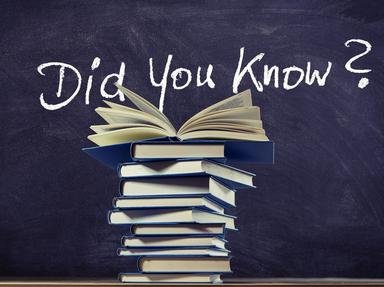Quiz Answer Key and Fun Facts
1. The Dacke War was a peasant uprising that occurred in 1542 in which of these countries?
2. Which of the following is commonly used in fireworks to emit a red colour upon ignition?
3. Which of these is a deity of knowledge and intelligence in Shinto mythology?
4. Which of these was the ballpark of the American baseball team, the Chicago White Sox, between 1910-1990?
5. Titan is the largest moon of Saturn. Which of these is the largest body of liquid on Titan?
6. The First Hen egg is a Fabergé egg which was originally a gift for which of these queens?
7. Which of these singers released "The Velvet Rope" as their sixth studio album in 1997?
8. "Guerrillero Heroico" is the photograph captured in 1960 which inspired most iconography and representations of Che Guevara. Who was the photographer?
9. Australia's most cold-tolerant snake is which of these?
10. The lead chamber process was an industrial method once used to produce which of these in large quantities?
11. In H.G. Wells' 1896 short story, "The Sea Raiders," the characters are terrorised and attacked by which of these animals?
12. Which of these won four gold medals in the 1936 Summer Olympic Games?
13. Bhandasar Jain Temple in Bikaner, Rajasthan, India, is dedicated to which of these?
14. The first nunnery to be established in Sweden was which of these?
15. "Ethiopia, Ethiopia, Ethiopia be first" was the national anthem of Ethiopia between 1975 and 1992. Who wrote it?
16. Which of these was the first person to be executed for witchcraft during the Salem Witch Trials?
17. Between 2006 and 2018, Beetham Tower was the tallest building in which of these cities?
18. The Sutlej River flows through India, Pakistan and which of these?
19. "The Garden of the Tuileries on a Winter Afternoon" is a painting created in 1899 by which artist?
20. Cerro Las Minas is the highest mountain of which of these countries?
Source: Author
LuH77
This quiz was reviewed by FunTrivia editor
agony before going online.
Any errors found in FunTrivia content are routinely corrected through our feedback system.

